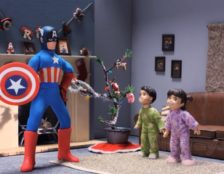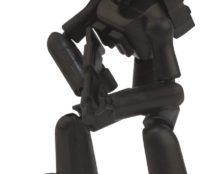Claymation - Why you should get animating with Clay
Probably the most traditional and best known medium for stop motion animation is Clay animation or claymation.
The good thing about clay animation is that you are only limited by your imagination. Clay is a very versatile medium. It can be moulded and shaped in to anything your imagination can come up with. It is sometimes broken into two different categories. Firstly, armature based models and secondly free form or shapeless or free form models. Armature based models involve some kind of skeletal structure covered with clay. These armatures are usually made of steel or wire. Whereas freeform stop motion animation does not use any internal skeletal structure.
History of Claymation
Claymation is over one hundred years old. It started back in early 1900 when camera men noticed that if they stopped and started their cameras between single frame shots that the playback create animation out of inanimate objects. It was initially called trick photography or trick filming. It gave birth to a whole generation of creative work that we today describe as stop motion.
The term “claymation” only more recently came in to common use when Will Vinton trademarked the term in 1978. Will died on the 4th of October 2018 ( may he rest in peace ).
The first use of claymation ( in wide circulation at the time at least ) is The Sculptor’s Nightmare, from 1908. Cel animation took over however in favor for most of the following 60 years. It emerged again with characters like Morphy and Gumby.
What Clay is best or is recommended? Oil based Clay or Water Based Clay?
Well any clay will work but some are easier to work with for a number of reasons. However we recommend oil based clay. There are a number of brands available for claymation such as Van Aiken. The other kind is water based clay. Water based clay is clay mixed with water. It is usually inexpensive but must be kept covered or it will dry out. Water based clay is easy to work when it has just the right amount of water, which is easy to manipulate.
Its disadvantages are equal to its advantages; it is often hard to control especially if a project goes into many days, it sags and separates easy, and it can’t be used with plastics, epoxies or polymers.
Oil based clay is clay mixed with oil or combinations of oils. Unlike water based clay it will not dry out when trying to do claymation, but it will oxidize over time and become difficult to work. Some oil based clays like plastina contain sulphur and can’t be used with silicone moulding compounds. Plastina can be sealed with a coating of sealer or shellac but any coating of this type will take away some of the character of the clay. Warming or preheating oil based clay will soften it and make it easy to work.
Some notes on Sculpey and premo.

Sculpey Clay
Sculpey, Super Sculpey (Polymer based), Premo can be baked hard so they are good good for parts that will not need to flex such as torso and mouth / expression pieces that are use as replacement parts.When they are baked they it are no longer effected by heat of light. However Super Sculpey stays more workable until heated than the other two. Note also that Premo is shiny when moulded by hand.
According to Premo’s site and we concur.. “Premo! Sculpey quickly reaches a workable state with minimal conditioning and remains soft and pliable while

Premo Clay
offering extra resistance without crumbling. Hint: Conditioning of all polymer clays may be facilitated with the use of a pasta machine. Simply cut the block in half and feed each half through the largest setting. Repeat 10 times more and your clay should be conditioned.
It is available in 32 colors, including a lustrous Gold and Silver, and a series of pearlescent colors. Its artists’ color palette is modeled after oil paint colors and designed to make color mixing a snap. Mix Premo! Sculpey with other polymer clay colors, powders or pigments for interesting colors and textural effects.”
Why not try to make a claymation character after watching this How to make a Claymation Character video.
Where do I start with Claymation?
1. Come up with a Story
You can by all means just start animating with you clay characters without any particular story however your viewer will loose interest in the absence of a story. You could for example animate a well known story like the three bears !
2. Plan with a storyboard
Draw out the story line in a rough sketch. This will be invaluable for you when you start animating. It will give you direction and focus. Something that you can easily leave sight of when animating as it takes time to animate.
3. Design your clay characters
This can be a fun part and will give vent to your imagination. Its a great strength of clay that it lends itself to creating any kind of character imaginable.
4. Build your Set
Again this can be fun. Using cardboard or foam you can create almost anything. It doesn’t need to be fancy or perfect.
5. Set up your lighting
A very important step. You need to light your stage correctly. Some good tips on lighting here.
6. Start taking snaps!
You can use your phone to take snaps when starting out but it is worth considering using a dedicated stop motion animation software program to get better results.














